Jack Leapt: Lets share our inspiration and WIPs!!
-
Hey everyone!
This month we have a really cool prompt! We have a hero, a castle, a flying griffin, and a courageous leap. We also have an obvious set of moments we could choose to depict: jack reaching the edge, the griffin swooping low, and jack leaping. There is also the implied moments of running to the edge, and either falling uncontrollably or landing on the griffin. Another notable element of the prompt is the lack of explanation for why jack is in this situation and what he is trying to accomplish—this is left up to you to fill in or hint at as you wish.Lots of you started setting up this month’s story in last month’s “design a griffin” prompt, but if you didnt you can still participate in this month’s prompt! If you have purchased the HTFYA course you can go back and watch the rock fortress livestream and the flight livestream where they go into how to make an interesting rock fortress (hint: make a pinterest board of actual castles) and how to make something look like its flying (hint: seperate the form from its shadow, put the form above the horizon line).
On the story front (which is what matters most)
The guys say that the best illustrations show the moment of greatest drama and everything in the frame contributes to the story—its all about simplicity and clarity. You can narrow down what you will show by asking yourself these questions (prescribed by Dr. Lee White in the “how do i tell good stories” episode of the podcast): What is my story about (in as few words as possible)? What details make it interesting? Then write 3-5 sentences explaining the story. For purposes of the prompt there should be a boy making a leap from the edge of something and a griffin involved. Then ask yourself what is the most interesting: the beginning, middle, or end/before, during, or after the action?The broader story you come up with will inform what is in your illustration (who is jack, where is he, why is he running and leaping, what is his story’s context—what does he wear and how does he look like, what does the castle look like) and deciding on before, during, or after will tell you how to show it. Your style is how it looks.
Your story doesn't have to be complex to be good, simple is usually better actually! Check out Norman Rockwell's illustration career for great examples of simple yet compelling visual stories.
-
This was my idea for this prompt that i actually made before I started working on last months prompt (march)
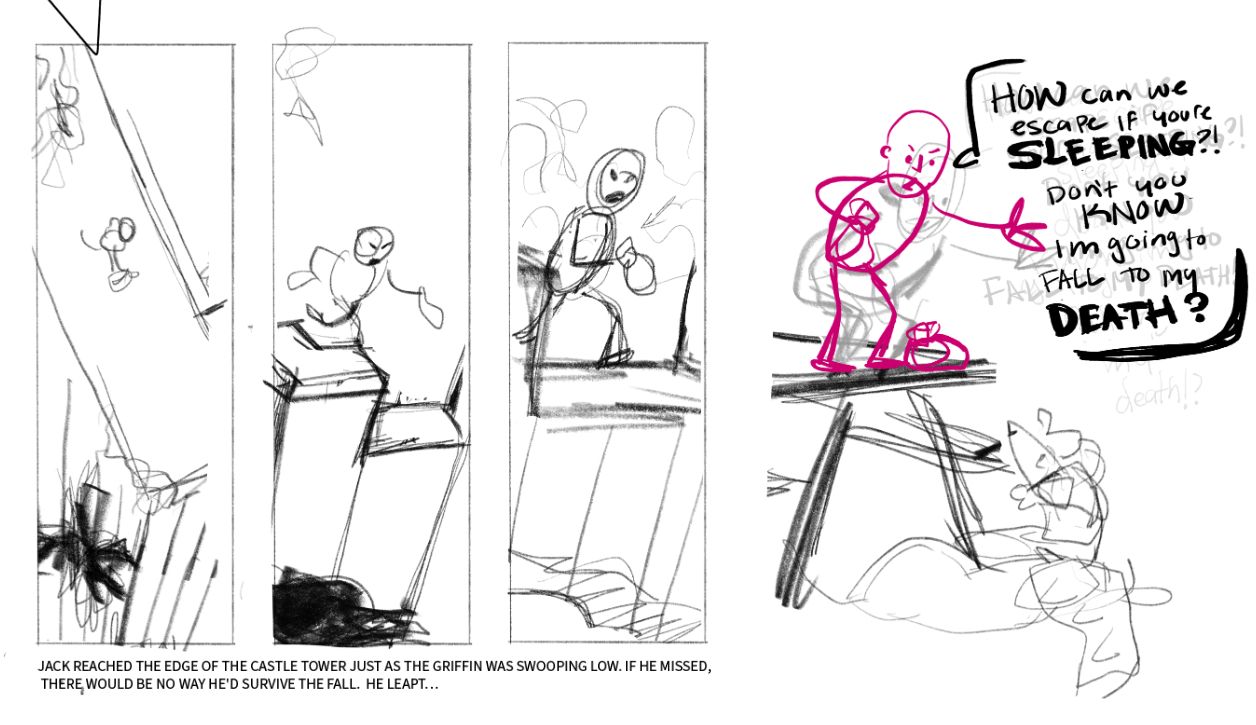
When i realized they wanted the design in a story (not just a design sheet) i went through those questions lee suggested and came up with a little story that could set up a boy dressing up his dog like a griffin and going on imaginary adventures: Boy helps his dog train to be a griffin in his next life.
That told me my boy should probably believe in reincarnation, and after some research i learned Hindus believe in reincarnation, so my boy might be Indian. I also learned that the legend of the griffin might have originated from travelers of the silk road seeing fossils in the desert in asia/india, so i thought that was extra appropriate. My visual experience is with the usa, so thats the world i put them in for the march prompt.
Now returning to april’s prompt, i have to re-evaluate if or how I want to do the little panel sequence. I already see if i do it i should get inspiration from Indian palaces and learn about traditional Hindi clothes. Not sure yet, ill have to think about how best to tell the story. I still love the joke at the end though—im not sure if it would work without the panels. Here are what im looking at so far.
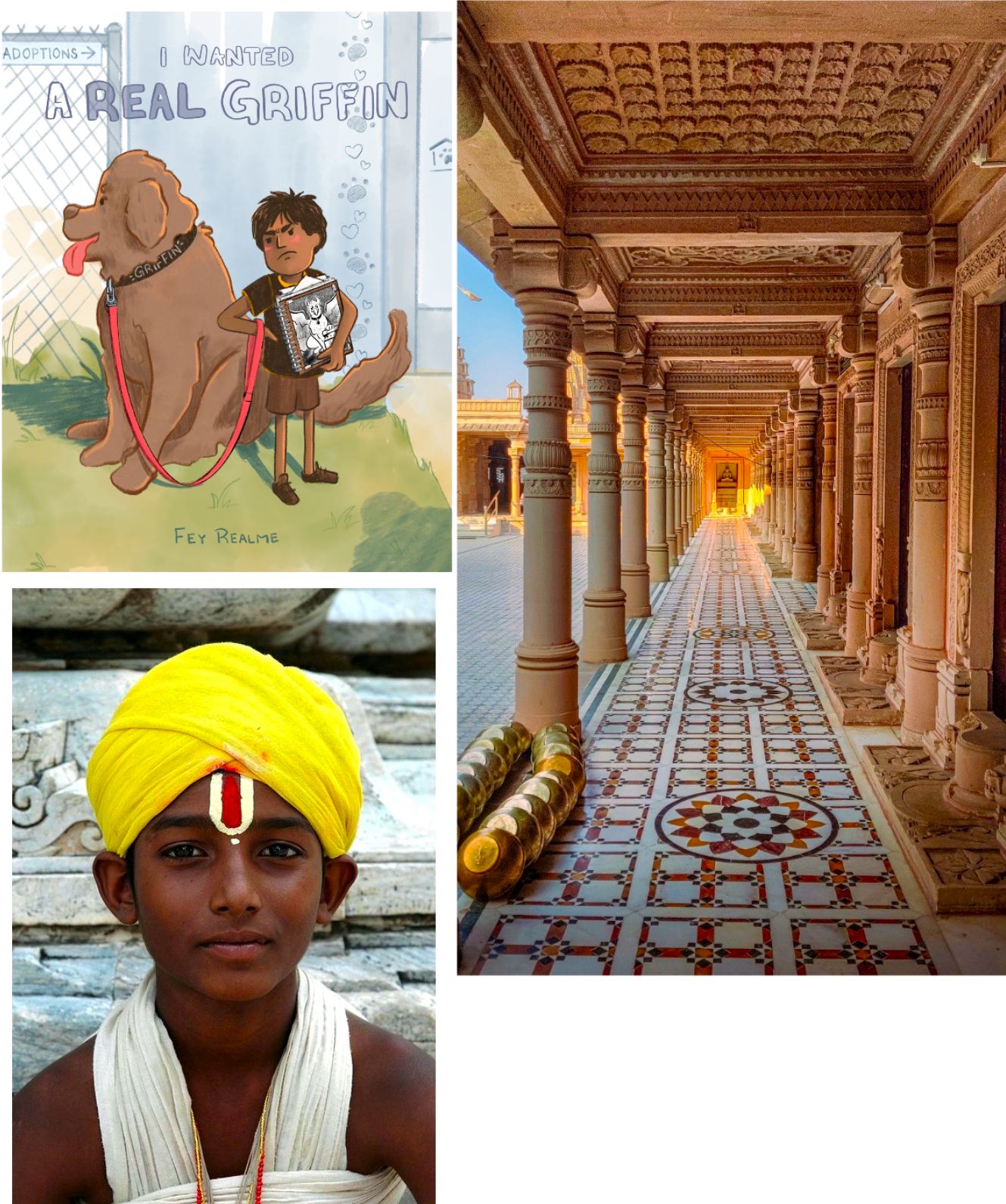
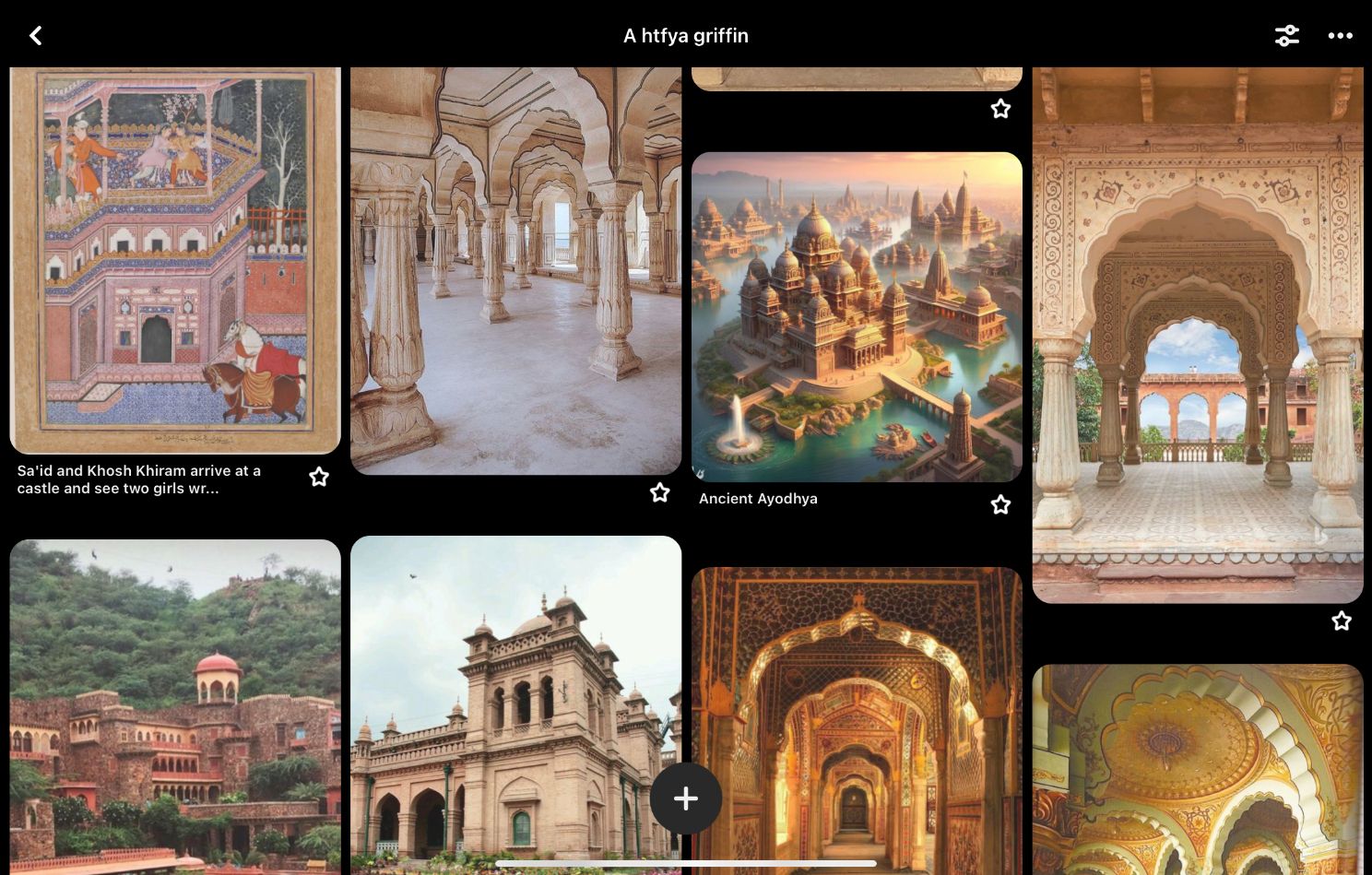
-
@R-Fey-Realme wow you did a lot of research on this! I like your story concept.
-
@R-Fey-Realme Great advice, R. Fey, thanks for sharing! Lee goes over his steps in more detail in the Visual Storytelling class.
-
@R-Fey-Realme You always come up with something creative and out of the box! It elevates the narrative of 'boy doesn't want a dog' by adding the element of reincarnation.
It feels both hopeful and sad somehow... my interpretation of the message is that it takes an entire lifetime to change yourself into who you wish you could be... to transform from the ordinary (normal dog) to extraordinary (mythical creature).
-
Hi, this is a bit of an embarrassing question
 , but as a non-native English speaker, I don't quite understand the topic of the assignment. So, is the griffin somewhere below or sinking down, and is Jack up on the castle's edge?And is Jack taking a leap somewhere? Or is the griffin flying somewhere?
, but as a non-native English speaker, I don't quite understand the topic of the assignment. So, is the griffin somewhere below or sinking down, and is Jack up on the castle's edge?And is Jack taking a leap somewhere? Or is the griffin flying somewhere?Sorry if I'm being confusing, the location/activity of the griffin isn't quite clear to me
 so any help would be wonderful!
so any help would be wonderful! -
@Enni-Heikura
Hi, my understanding is that Jack, whether animal, human etc is leaping from a location onto the gryphon as he is flying by, near, under him. I’m staying vague because I don’t want to limit your imagination! Good luck! -
@Enni-Heikura It is worded kinda vague, I guess to leave it up to interpretation of the illustrators, but it's also too many words for a regular picture book page. So you could probably pick a moment out of this paragraph rather than capturing the whole thing written, if that makes sense.
At first I read the griffin as a danger for Jack to act quickly but he could also be trying to time it right in jumping off the tower to land on top of the griffin.
Hope this helps. -
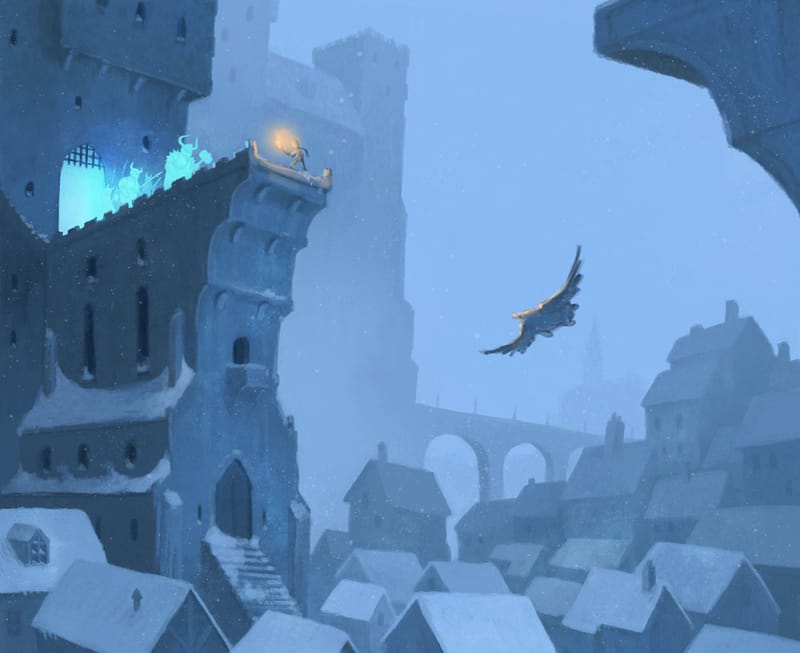
I'm not sure I'll get this finished this month. I've started work on a personal project, so the very limited time I have for illustration will most likely be taken up with that. I liked the idea of having this image follow on from my previous illustration for the Gryphon prompt. I also wanted this illustration to be a cold blue with warm highlights, because my previous image was a warm orange with cold blue in the shadows. I wanted to do it quickly too, so I missed out the traditional pencil phase and just started painting in photoshop to save time. Anyway, maybe I will get it finished, who knows, but here is how far I've got. Hope you guys have a blast with this months prompt and can't wait to see what everyone comes up with.
-
Thank you @kayleenartlover and @Larue for your help!!Perhaps I understand now that the griffin is on Jack's side. Before I thought the griffin was his enemy... so this helps a lot!

-
@Enni-Heikura My understanding is, you could do it either way -- griffin is on Jack's side or griffin is a threat that Jack is trying to escape from -- it's up to you to decide what the story is.
-
@GabeRobinson Thank you for your answer! I think it is more clear to me now

-
Hey guys
just wanted to post some thumbnails etc. I've been working on, any feedback is helpful... just playing around with ideas and perspectives... I struggle with perspective, so looking at reference pics has been helpful. I'll have more to post up I think, but I wanted to put these up before I headed off to work!
Have a great Thursday where ever you are in the world!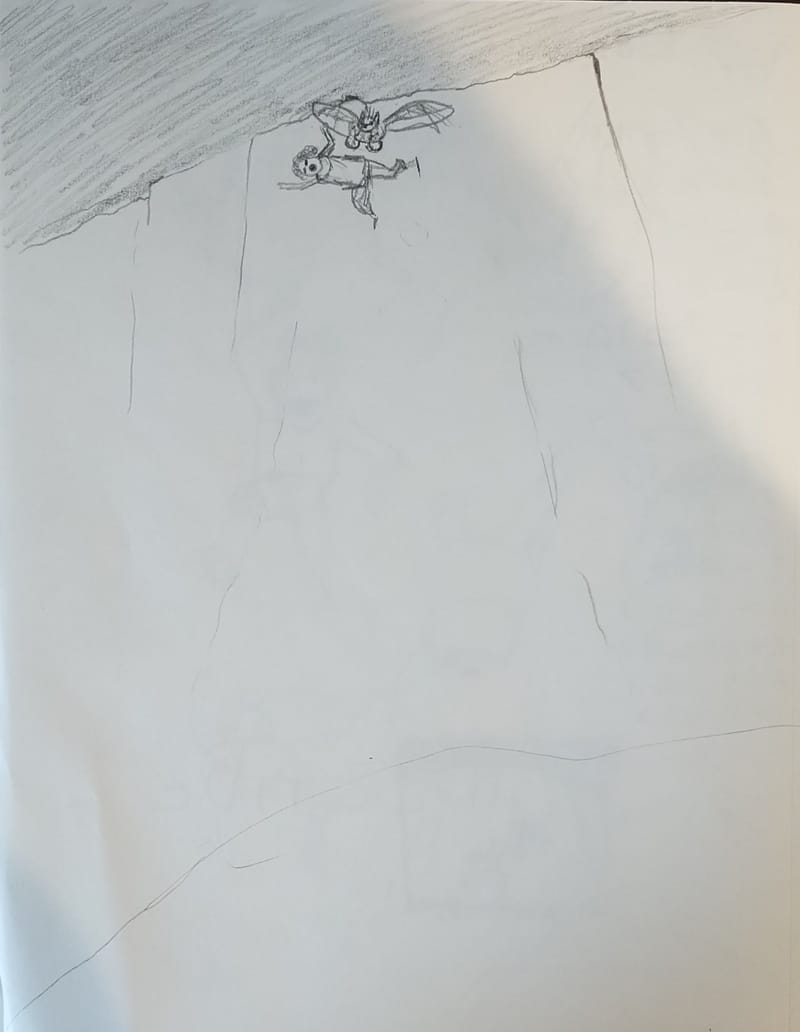
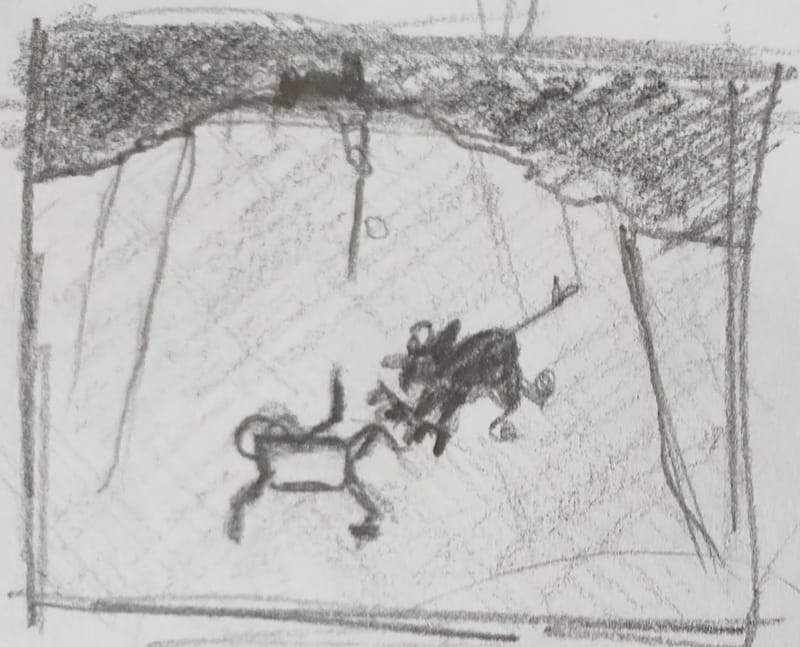
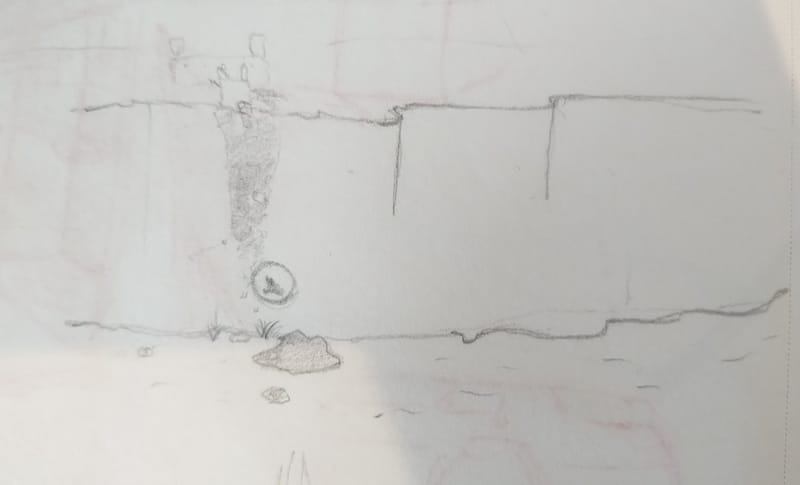
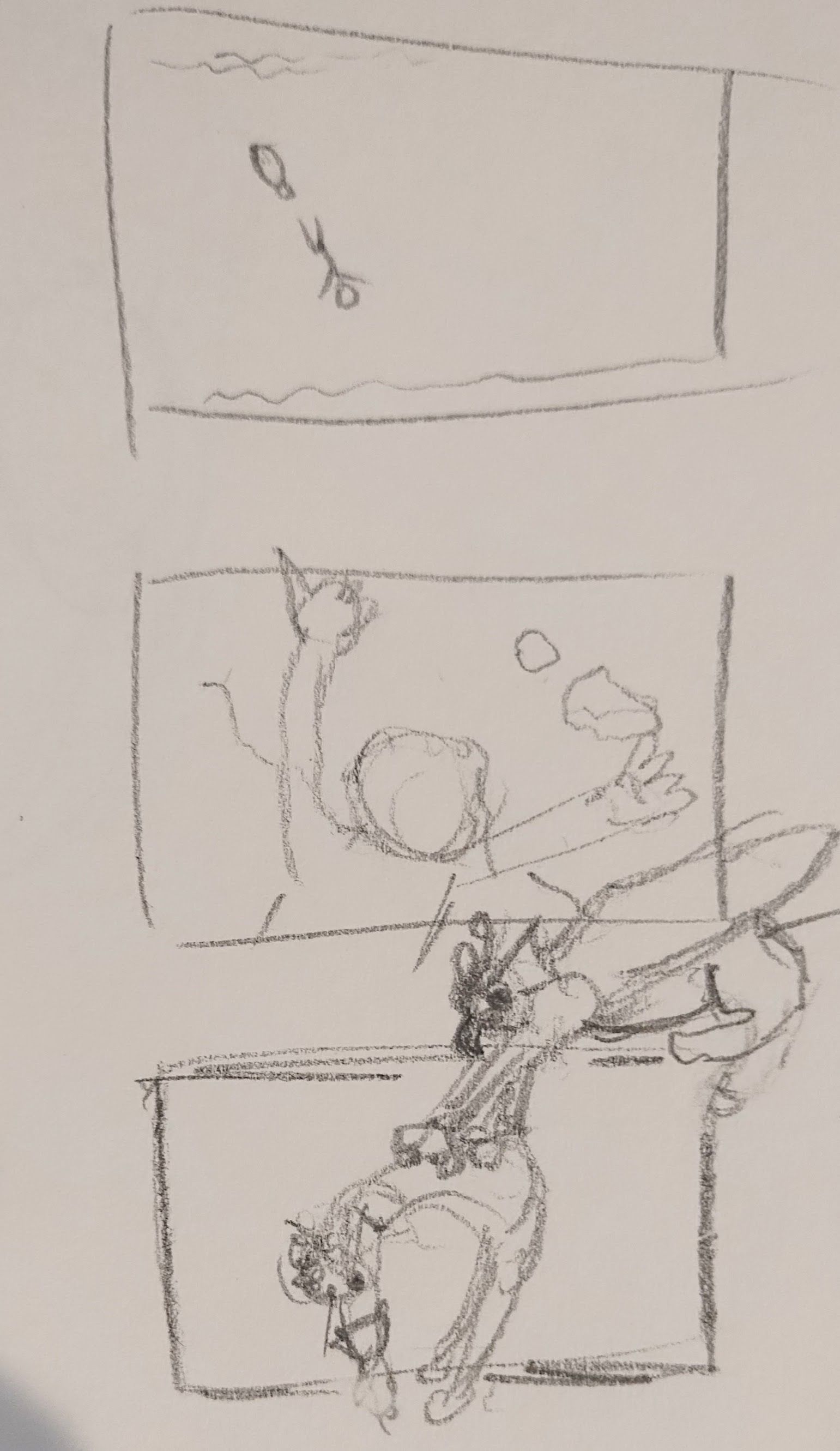
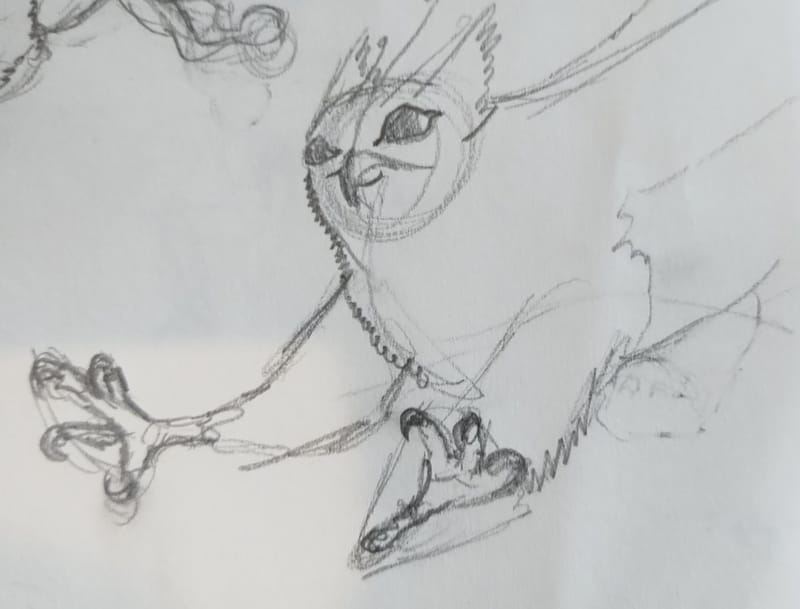
-
Today's live stream inspired me to start on the April prompt. Not sure if I will make it in time, but here's the start.
The idea is that Jack is a bandit jumping to get away from the law. I'm not sure if the lasso mid-jump makes sense(or if I will be able to draw the physics of it), but it seemed like a a good dynamic pose when thumbnailing. Would love to hear thoughts on it!
PS. The gryphon is a turkey vulture and a horse
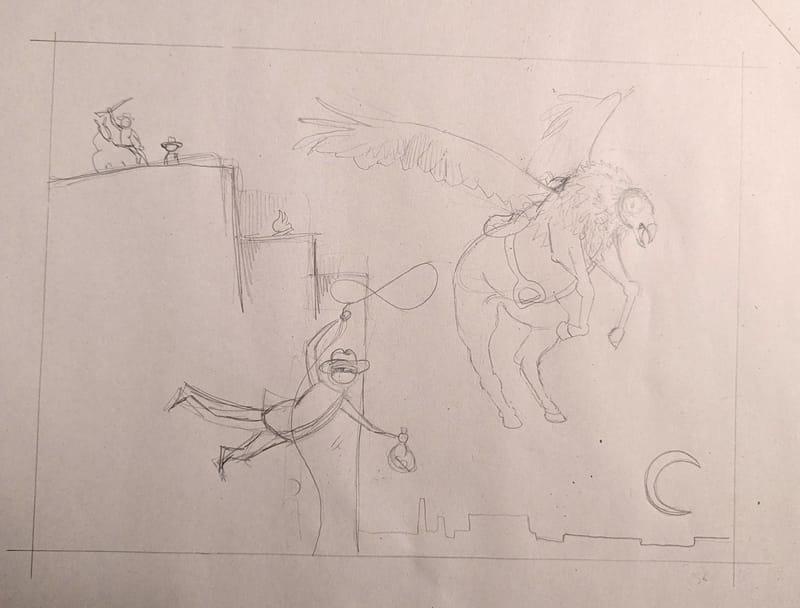
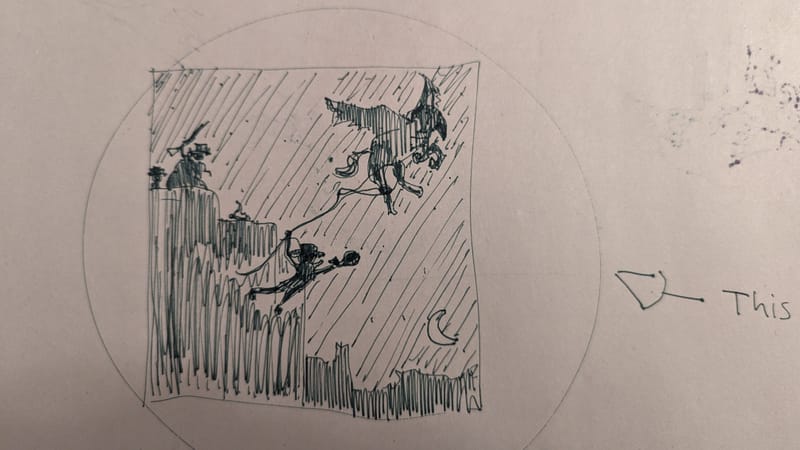
-
I think I’m liking the composition on the bottom thumbnail, but not sure which version to do, with the griffin on the left or right?
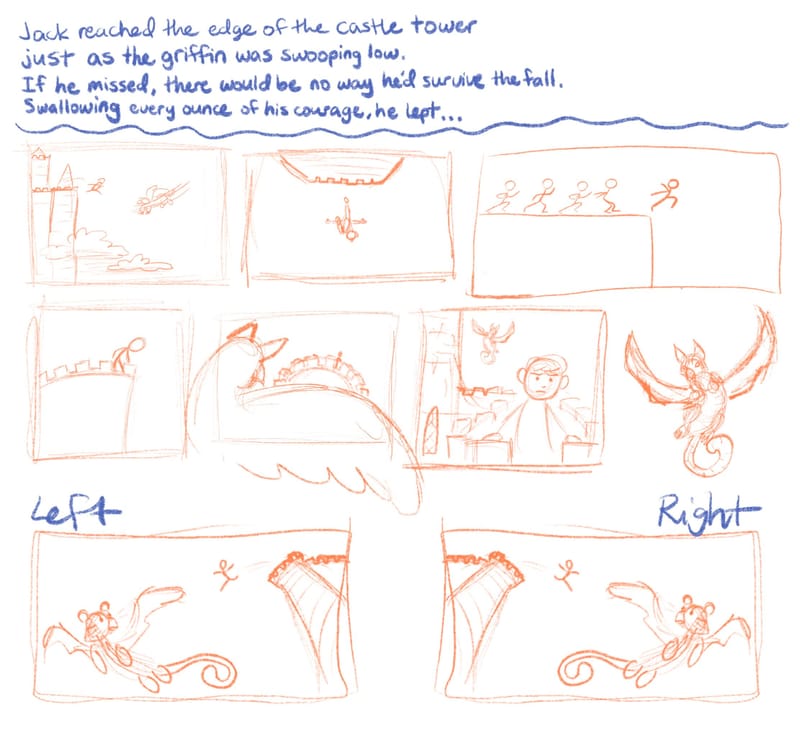
-
@kayleenartlover those look great! Action should generally read left to right, so i recommend the right version! Cant wait to see it!
-
@MarcRobinson Ooh, very cinematic! this scene reminds me of the golden eagle who saves Gandalf. And just as epic.
-
@kayleenartlover I agree, the Right one. These panels look great, it is very clear what is going on, there's a nice rhythm to the angles and zooms.
-
@J-Morgan-Looney the 2nd one with the arrow pointing to it could work. Maybe the hind legs of the griffin could bend forward a little and the lasso be nearly hooked on. The lasso could still be open/slack or whatever the technical lassoing term is. I like how everything is silhouetted. And I just happened to see a turkey vulture for the first time a couple days ago. They are magnificent! Nice choice.
-
@jenn hey thanks Jenn I appreciate it.